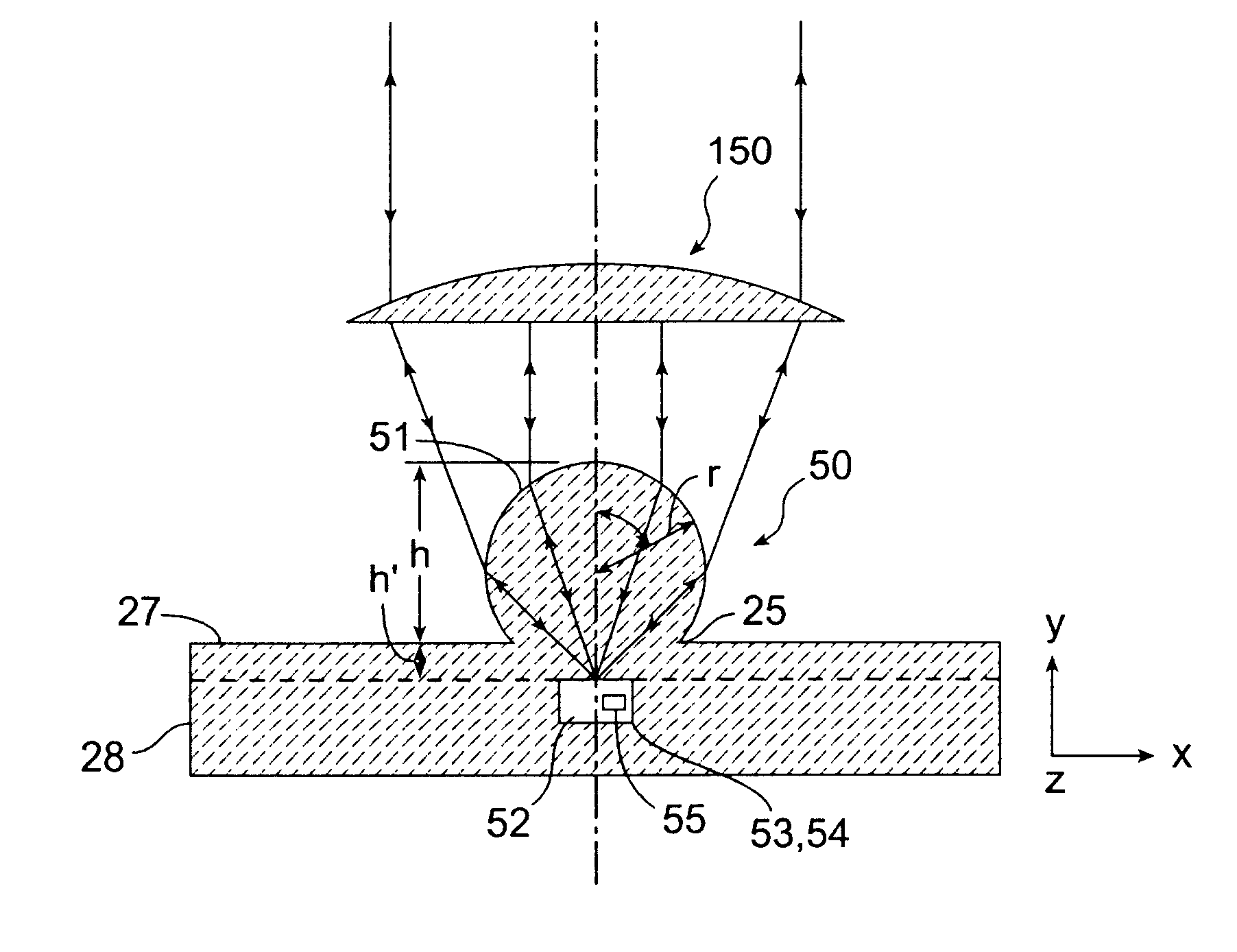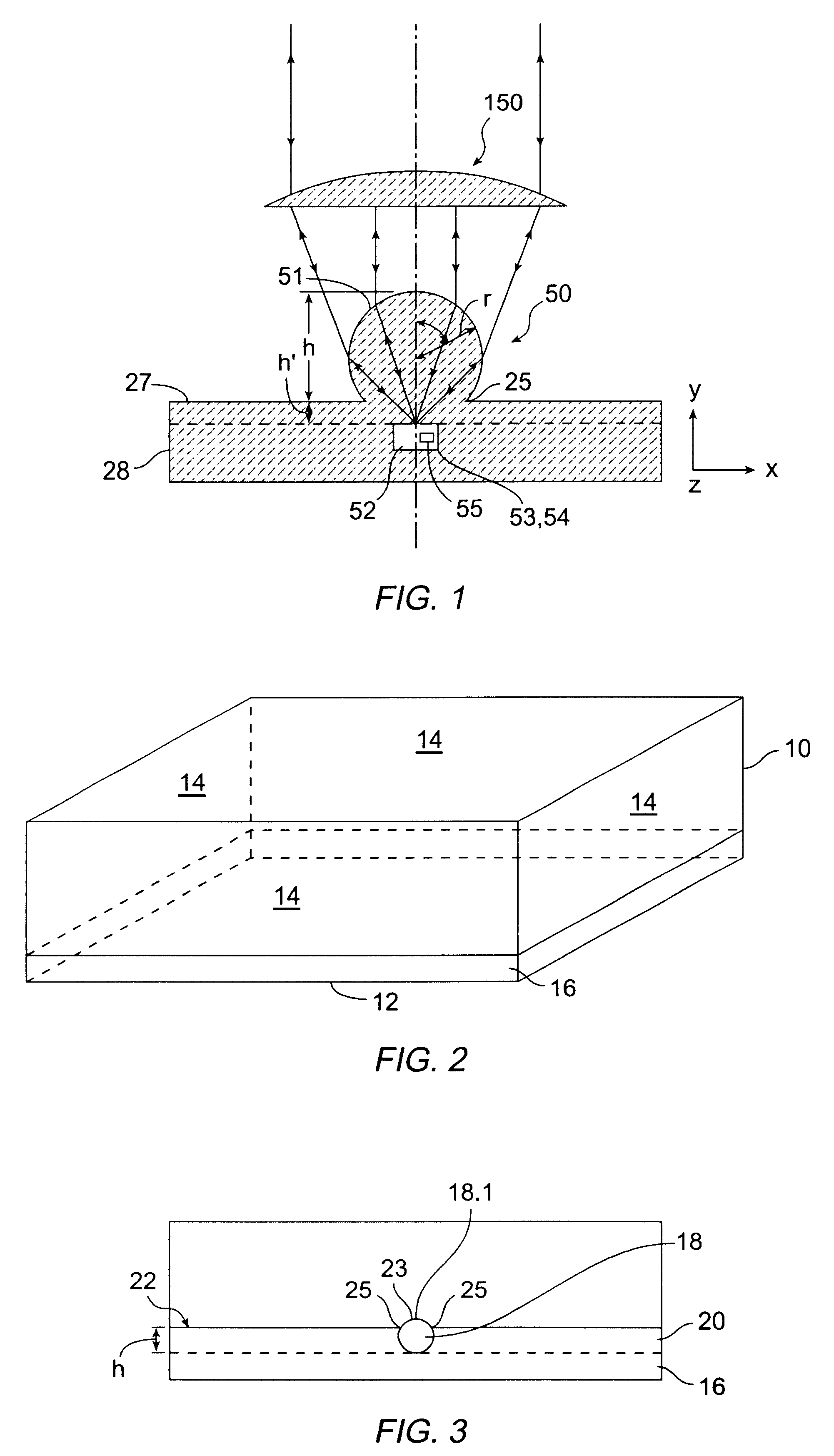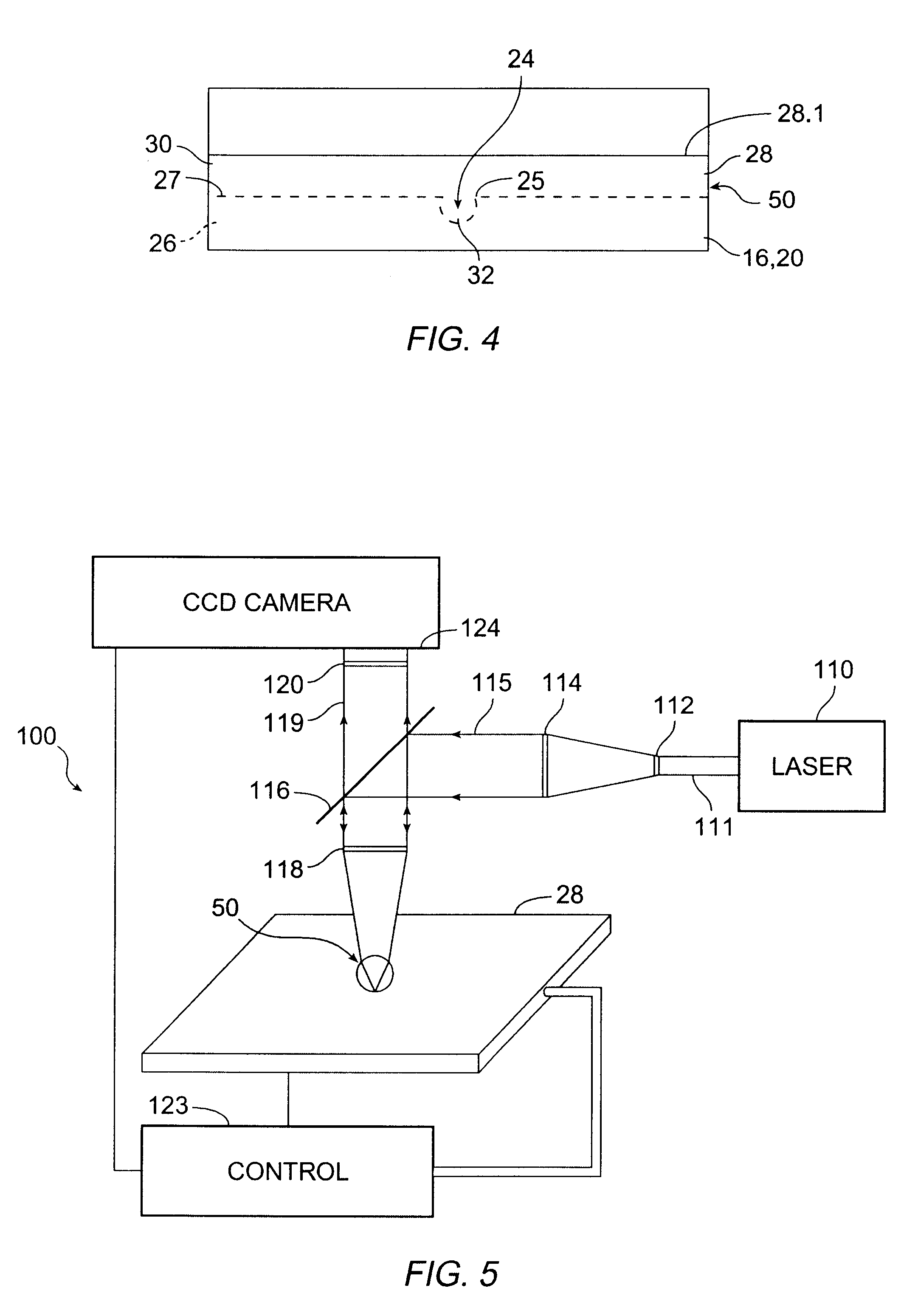Solid immersion lens structures and methods for producing solid immersion lens structures
a technology of solid immersion lens and structure, which is applied in the direction of lenses, instruments, other domestic objects, etc., can solve the problems of complex manufacturing process, long polishing time, and inability to perfect,
- Summary
- Abstract
- Description
- Claims
- Application Information
AI Technical Summary
Benefits of technology
Problems solved by technology
Method used
Image
Examples
Embodiment Construction
In order to understand the invention, it is helpful to define the terms associated with a solid immersion lens SIL structure 50 as it might be used in a device such as a microscope, spectroscope or cytometer. FIG. 1 illustrates the functioning of a solid immersion lens, with indication of the parameters used to describe the structure and operation. A solid immersion lens portion 51 comprises a sphere of radius r and index of refraction n.sub.s. It is disposed at a highest height h above a surface 27 of a body portion 28 so that a boundary margin 25 is formed which is narrower in diameter than the diameter of the lens portion 51. An observation region 52 is provided at a distance h' from the surface 27. Samples are placed in the region for observation according to the intended application, such as microscopy, spectroscopy or cytometry. Also shown with the structure 50 is a collection / collimating lens 150. The spherical structure and collection configuration admits to construction of ...
PUM
| Property | Measurement | Unit |
|---|---|---|
| Adhesion strength | aaaaa | aaaaa |
| Moldable | aaaaa | aaaaa |
| Dimension | aaaaa | aaaaa |
Abstract
Description
Claims
Application Information
 Login to View More
Login to View More - R&D
- Intellectual Property
- Life Sciences
- Materials
- Tech Scout
- Unparalleled Data Quality
- Higher Quality Content
- 60% Fewer Hallucinations
Browse by: Latest US Patents, China's latest patents, Technical Efficacy Thesaurus, Application Domain, Technology Topic, Popular Technical Reports.
© 2025 PatSnap. All rights reserved.Legal|Privacy policy|Modern Slavery Act Transparency Statement|Sitemap|About US| Contact US: help@patsnap.com



